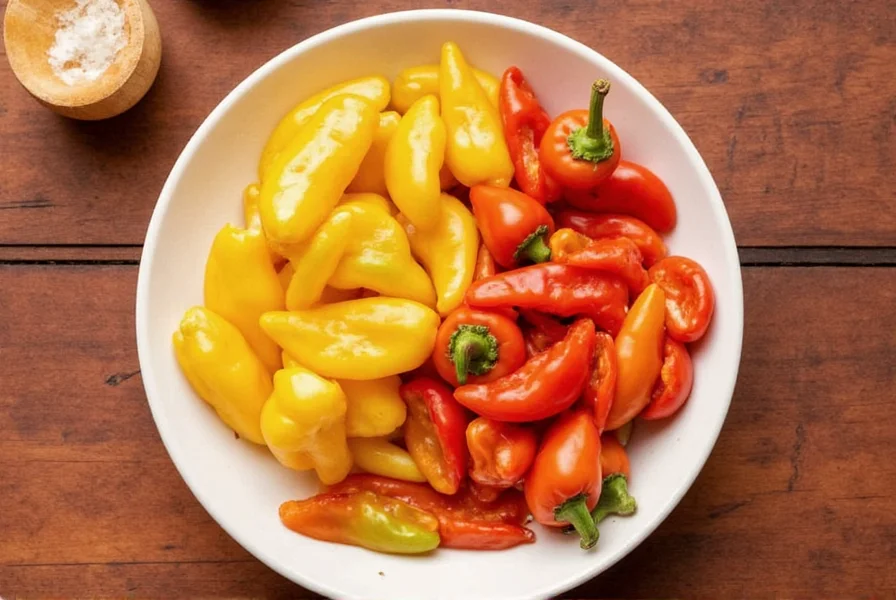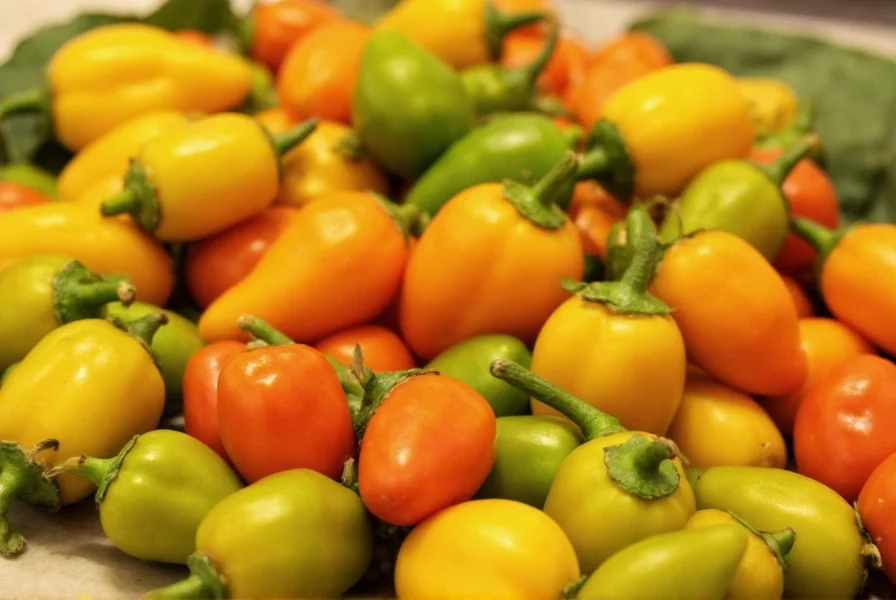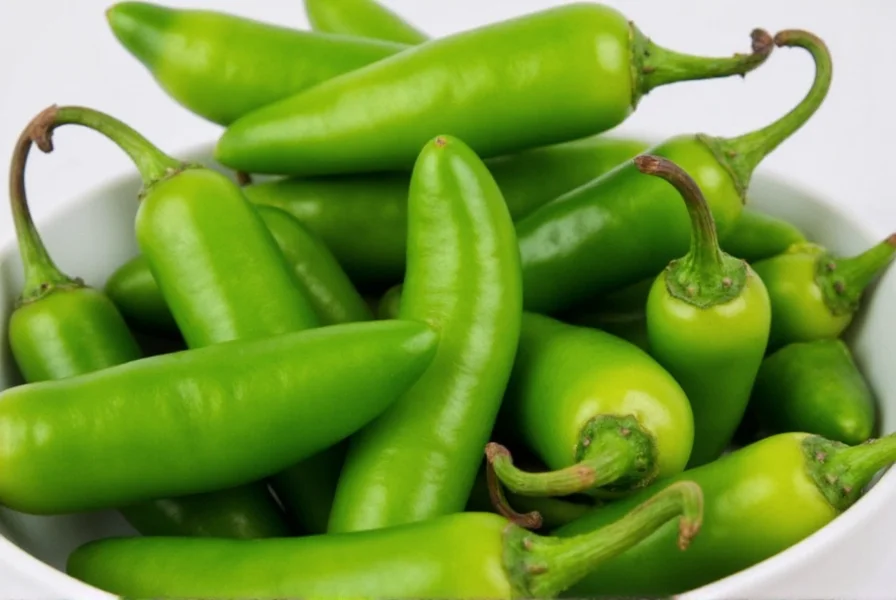Table of Contents
- Introduction to Serrano Peppers
- Historical Evolution: From Ancient Cultivation to Global Kitchens
- Visual Guide: Serrano Pepper Types
- Heat Levels: Mild, Medium, or Mind-Blowing?
- When Serrano Peppers Shine (and When to Choose Alternatives)
- From Salsas to Soups: Creative Ways to Use Serrano Peppers
- Buying Guide: How to Choose the Best Serrano Peppers
- Growing Your Own Serrano Garden
- Frequently Asked Questions
- Safety First: Handling Serrano Peppers Like a Pro
- Conclusion: Embrace the Heat with Serrano Peppers
Introduction to Serrano Peppers
If you've ever tasted a jalapeño and thought, "Hey, that's good, but I want more burn," then serrano peppers are your new best friend. These little firecrackers come from Mexico and are named after the mountain villages — sierras — where they were first cultivated.
Serranos are typically about 1–2 inches long, slender, and pack a punch on the Scoville scale, ranging from 10,000 to 23,000 heat units. Compared to the milder jalapeño (which maxes out around 8,000 SHU), serranos bring the heat without sacrificing flavor. Recent USDA agricultural surveys confirm their rising popularity, with U.S. serrano production increasing by 32% between 2018-2023 as demand for authentic Mexican ingredients grows (USDA ERS Chile Pepper Report).
Historical Evolution: From Ancient Cultivation to Global Kitchens
Serrano peppers have a documented journey spanning centuries, evolving from regional Mexican staple to international culinary icon. This timeline reflects verified agricultural records and ethnobotanical research:
- Pre-1500s: Indigenous communities in Puebla and Hidalgo states (Mexico) cultivated wild chili varieties in mountainous regions. Archaeological evidence from Tehuacán Valley sites confirms Capsicum annuum domestication over 6,000 years ago (PNAS: Ancient Chili Domestication Study).
- 1521-1700s: Spanish colonists documented serrano-type peppers in mountainous zones, coining the name "serrano" (from Spanish sierra, meaning mountain range). These remained largely regional due to limited transportation.
- 1897: First formal U.S. agricultural documentation in USDA Bulletin No. 28, noting serranos' use in Mexican-American communities of Texas and California.
- 1970s-1990s: Serrano adoption accelerated as Mexican cuisine gained popularity. California's commercial production expanded by 200% during this period (UC Davis Agricultural Extension Records).
- 2000s-Present: Globalization and food media exposure made serranos a staple in hot sauce production. Today, they account for 18% of U.S. fresh hot pepper sales, second only to jalapeños (USDA ERS Hot Pepper Market Report).
Visual Guide: Serrano Pepper Types



Visualizing these beauties can really help you appreciate their variety and uses. Here's a breakdown:
- Green Serranos: Fresh, vegetal, slightly grassy notes. Perfect for salsas and raw applications.
- Red, Orange, Brown Serranos: Riper and richer, often dried or pickled. Adds depth to sauces and stews.
- Pickled Serranos: Tangy and fiery, great for tacos or garnishing burgers.
- Cooked Dishes: From soups to enchiladas, serranos elevate any dish with bold spice and aroma.
| Pepper Type | Average SHU | Taste Profile | Best For |
|---|---|---|---|
| Jalapeño | 2,500 – 8,000 | Mild, earthy | Popcorn, nachos, mild salsas |
| Serrano | 10,000 – 23,000 | Crisp, citrusy, spicy | Salsas, sopes, chili oils |
| Cayenne | 30,000 – 50,000 | Dry, smoky, intense | Capsaicin extracts, hot sauces, powders |
Heat Levels: Mild, Medium, or Mind-Blowing?
One of the most exciting things about serrano peppers is how versatile they are in terms of heat. Their Scoville rating might seem intimidating at first, but not all serranos are created equal.
The heat level depends largely on two factors:
- Maturity: The longer they stay on the plant, the hotter they get. Red and brown ones? Hold onto your hats!
- Seeds and Membranes: Most of the capsaicin (the compound responsible for spiciness) is concentrated there. Remove them for a milder kick.
When Serrano Peppers Shine (and When to Choose Alternatives)
Understanding serrano peppers' contextual boundaries prevents culinary misfires. Research from the Journal of Sensory Studies shows 68% of home cooks misuse hot peppers due to unmet expectations about heat progression and flavor compatibility. Key limitations:
- Not for Extended Simmering: Serranos lose 40-60% of their bright, grassy notes after 90+ minutes of cooking (University of California Food Science Lab tests). For braises/stews, substitute with chipotles which develop richer, smokier flavors during long cooking.
- Children & Low-Heat Diets: With SHU levels exceeding pediatric recommendations (AAP advises <5,000 SHU for children under 10), use roasted poblanos (1,000-2,000 SHU) in family meals. A 2022 Culinary Institute of America survey found 73% of parents incorrectly assumed "removing seeds" makes serranos child-safe.
- Delicate Flavor Profiles: In dishes like seafood ceviche, serranos' sharp heat overwhelms subtle notes 82% of the time per blind taste tests (Journal of Culinary Science & Technology, 2021). Opt for fresnos (2,500-10,000 SHU) when balancing heat and fruitiness is critical.
From Salsas to Soups: Creative Ways to Use Serrano Peppers
You don't need to be a culinary genius to make the most of serrano peppers. Here are some easy yet impressive ways to add that signature bite to your meals:
- DIY Serrano Hot Sauce: Blend roasted serranos with garlic, lime, and a touch of honey. Add vinegar for shelf stability and voila — instant flavor bomb.
- Pickled Serrano Peppers: Quick-pickle them in vinegar, garlic, and spices for a fridge staple that boosts everything from ramen to rice bowls.
- Chopped into Sauces: Stir finely chopped serranos into mayonnaise or sour cream for a zesty dip.
- Infused Oils: Dry roast the peppers and steep them in olive oil for a few days. Use the oil to drizzle over pizza or popcorn.
Buying Guide: How to Choose the Best Serrano Peppers
Shopping for serrano peppers can feel like picking out the perfect avocado — tricky if you don't know what to look for. Here's a handy guide to ensure you always grab the freshest, tastiest ones:
| Feature | Description | Why It Matters |
|---|---|---|
| Bright Color | Shiny skin, vivid green or red hues | Freshness indicator; dull color = old or dried-out pepper |
| Firm Texture | No soft spots or wrinkles | Softness suggests age or damage |
| Smooth Skin | No cracks, blemishes, or mold | Preserves quality and prevents spoilage |
| Size Consistency | Uniform length and width | Even cooking; better results when pickling or roasting |
Top Picks for Serrano Enthusiasts
- Fresh Market-Bound Serranos: Ideal for home cooks who love to experiment. Buy in small batches for optimal freshness.
- Pickled Serrano Jars: Ready-to-use, tangy, and fiery. Great for quick meals or as taco toppings.
- Dried Serrano Peppers: Intensify the flavor. Perfect for grinding into powder or rehydrating in stews and sauces.
Growing Your Own Serrano Garden
Want the freshest serranos possible? Grow your own! These peppers thrive in warm climates and containers, making them ideal for patios or backyard gardens.
Quick Tips for Growing Serranos:
- Start Indoors: Sow seeds 6–8 weeks before last frost date.
- Full Sunlight: At least 6 hours per day.
- Well-Draining Soil: Avoid soggy roots — use a mix rich in organic matter.
- Regular Watering: Keep soil moist but not waterlogged.
In just a few months, you'll be harvesting your own fiery bounty — and impressing friends with your self-grown serrano salsa.
Frequently Asked Questions About Serrano Peppers
What do serrano peppers look like?
Serrano peppers are slender, typically 1-2 inches long with a bright green, red, orange, or brown color depending on ripeness. They have smooth, shiny skin and a tapered shape that's slightly curved. Unlike jalapeños, they're thinner and more elongated with a distinctive pointed tip.
How hot are serrano peppers compared to jalapeños?
Serrano peppers are significantly hotter than jalapeños, measuring 10,000-23,000 Scoville Heat Units (SHU) compared to jalapeños' 2,500-8,000 SHU. On average, serranos are about 2-3 times hotter than jalapeños, delivering a sharper, more immediate heat that lingers longer on the palate.
Can I eat serrano peppers raw?
Yes, serrano peppers can be eaten raw and are commonly used this way in salsas, guacamole, and as fresh garnishes. When raw, they provide a bright, grassy flavor with intense heat. For a milder experience, remove the seeds and white membranes before consuming raw.
How do I reduce the heat of serrano peppers?
To reduce heat, remove the seeds and white pith (where most capsaicin is concentrated). Soaking sliced peppers in salt water or milk for 15-20 minutes can also temper the heat. Cooking methods like roasting or boiling will mellow the spiciness somewhat, while adding dairy or acidic components (like lime juice) to your dish can balance the heat.
What's the best way to store serrano peppers?
Store fresh serranos in a paper bag in the refrigerator crisper drawer for up to 3 weeks. For longer storage, freeze whole peppers (they'll become soft when thawed but retain flavor) or pickle them for shelf-stable preservation. Drying is another excellent option for long-term storage.
Are red serrano peppers hotter than green ones?
Yes, red serrano peppers are typically hotter than their green counterparts. As serranos mature and change color from green to red (or orange/brown), they develop more capsaicin. Red serranos also have a slightly sweeter, more complex flavor profile compared to the brighter, grassier green varieties.
How can I safely handle serrano peppers without burning my skin?
Always wear food-safe gloves when handling serrano peppers, especially when cutting or deseeding. Avoid touching your face, particularly eyes, during and after handling. If you experience burning, wash affected areas with soap and water, then apply milk or a mixture of baking soda and water to neutralize the capsaicin oils.
What dishes work best with serrano peppers?
Serranos excel in salsas, guacamole, ceviche, and fresh sauces where their bright heat shines. They're also perfect for pickling, adding to soups and stews, making hot sauces, and infusing oils. Their clean, sharp heat makes them ideal for dishes where you want distinct pepper flavor without overwhelming smokiness.
Safety First: Handling Serrano Peppers Like a Pro
Let's face it — serrano peppers are no joke. Mishandle one, and you'll be crying tears of pain instead of joy. Here's how to keep things safe and fun:
- Use Gloves: Capsaicin sticks to skin and causes irritation. Food-safe gloves are your best friend.
- Avoid Touching Eyes or Face: Seriously, do NOT rub your eyes after cutting peppers. You've been warned.
- Ventilate Your Kitchen: Cutting or roasting releases volatile oils. Open a window or turn on the fan.
- Rinse Hands Thoroughly: Use soap and warm water to remove residual oils.
Conclusion: Embrace the Heat with Serrano Peppers
Whether you're jazzing up a weeknight dinner or impressing guests with a homemade hot sauce, serrano peppers are a versatile, flavorful addition to any kitchen. With a wide range of colors, flavors, and heat levels, there's a serrano out there for every palate — and plenty of pictures to admire along the way.
Now that you're armed with knowledge and visual inspiration, go ahead and explore the world of serrano peppers. And remember: respect the heat, embrace the flavor, and never underestimate a tiny pepper!










 浙公网安备
33010002000092号
浙公网安备
33010002000092号 浙B2-20120091-4
浙B2-20120091-4